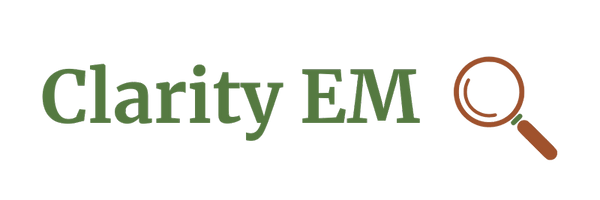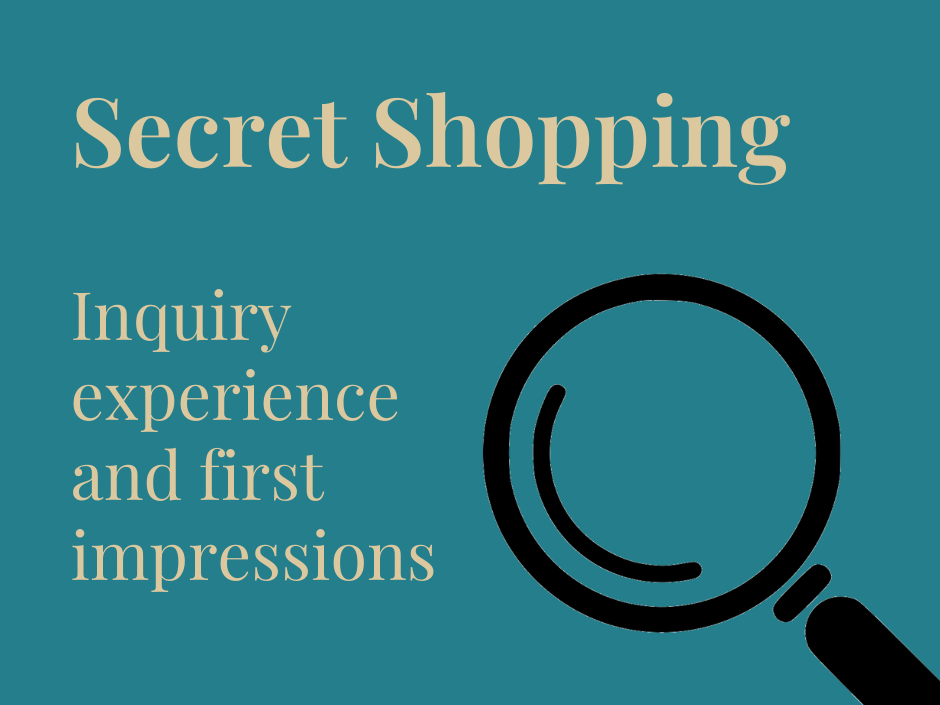The First Month of Comm Flows: 2025 Secret Shopping
- Will Patch

- Mar 29
- 8 min read
The beginning of an inquiry comm flow sets the tone and expectations for how you recruit and engage with students. The first few touchpoints, especially the autoresponder and first touch, are critical to earning their attention and proving yourself as an institution that cares.
Are you immediately providing value and training them to open your emails and answer your calls or texts?
Are you spamming them with irrelevant information and telling them to apply and visit repeatedly?
Before I take a full dive into the full spring comm flow, these results will provide more details about the early comm flow. If you haven’t read part one, which evaluated the inquiry process and the first week of outreach, you should do that for background information.
College selection and our student
Our student is a senior who is just hitting the search hard. Because it’s spring, he expects quick responses because he feels the rush. He has a 3.5 GPA, is interested in business and art, study abroad, is the first in his family to attend college, and wants to get the most out of the campus experience.
Because the search started at the beginning of February, only colleges still accepting applications were selected. Colleges were selected based on location (in-state, adjacent state, and national) and their type (4-year private, 4-year public flagship, 4-year regional public, community college, or online).
The first month of inquiry comm flows
The first month was simultaneously over and underwhelming. The 47 (of 65) colleges that responded to my inquiry sent 494 touchpoints. One-third sent 5 or fewer touchpoints, and two-thirds sent 10 or fewer, but it was the 25% who reached out at least every other day that were exhausting. I would like to assume that a senior inquiring in the spring gets a compressed comm flow due to the shorter deadline, but when reviewing the 4 Ps and how those with the highest frequency fared, it wasn’t with more relevance.
When a college reached out at least every other day, 41% of those touchpoints were purely Process messaging, encouraging an application or visit, and 18% were Pointless (wrong audience, wrong interests, or just letting me know they would be in touch). The high-value Personalized and relevant messaging that students need to see value and convert quickly was only present in 24% of outreach, and only 1 college fared better than one-third of outreach hitting the mark.
The channel breakdown of recruiting touchpoints
Unsurprisingly, emails were the most common type of touchpoint received, but phone calls and text messages were more common than mail for inquiries. This is a shift from prior secret shopping projects where mail was more common than the phone.
399 emails (81%)
50 phone calls (10%)
34 texts (7%)
5 postcards (1%)
4 viewbooks (0.8%)
2 letters (0.4%)
Of the 50 phone calls, 42 were from online colleges. Of the remaining 8, 4 were from one community college and 4 were from private 4-year colleges. Even though my inquiry was made as a current high school senior, almost every call was made during the school day. Most phone calls were merely checking in, though some encouraged applications or visits.
Almost half of the mail came from private 4-year colleges, but one public flagship and a couple of community colleges aldo got in the mailbox. Postcards, in particular, were a waste. Four of them were just encouraging me to apply (enough emails are saying that already), and the fifth was for the wrong major. Postcards can be visually engaging and provide quick links to more information. Make it something to live on a pegboard or fridge with important dates or information! Wasting money to send a postcard telling students to apply is surprising in 2025.
The most common touchpoint themes in student comm flows
Touchpoints themes ranged from straightforward asks without warming/nurturing (i.e., “proposing on the first date”) to wonderful dives into student life or responding to stated interests.
26% apply now
12% visit
8% generic autoresponder
7% financial aid
7% majors info
4% “just checking in”
4% student life
3% general academic info
3% bulleted list of facts
2% information about the wrong major
2% responding to interests
2% info for the wrong student type
Upcoming events are important to highlight, especially if they’re tied to an affinity group or major/college. However, the emails that only tell students to come for an individual visit are a missed opportunity. Instead of telling them they can come any day of the week to visit (which they know) send a touchpoint highlighting their major or an interest they’ve indicated and then direct them to a landing page to dive deeper with student reviews, rankings, videos, and links to apply and visit to meet with current students and faculty or staff. That experience is much richer and builds affinity by showing them why they would want to visit and attend.
We know financial aid is important to students, but not as important as their major. It’s great that the hard financial conversations are showing up so high here, just edging out majors. The messages were usually well done and addressed both students and parents with scholarships, FAFSA information, and what to expect in the process.
How colleges addressed the most pressing student interests
There were five areas that I wanted to see colleges address in their comm flows:
Major(s) of interest
Addressing extracurricular interests
Student life and the campus culture
Financial aid
The local area (especially for out-of-state institutions)
How did colleges do in serving these needs? Let’s look at each area in-depth.
Major of interest touchpoints
Only 11 (23%) colleges sent information on either major, and only one addressed both interests. Private colleges and online institutions were the most likely to send information relevant to the majors, while public colleges — especially flagships — did the worst. Public flagship institutions were more likely to send information on the wrong major than what was requested in the inquiry form.
The best outreach included these elements to make the experience more dynamic:
AMA or live sessions to learn more about the program
Outcomes data specific to the major
Student stories about their experiences and the enrollment process
Student life relevant to the major
To improve the experience, the major(s) should be a throughline as well as one of the earliest touchpoints. Students need to know 1) that you have their major, and 2) what they will do in that major, and 3) how they will thrive after graduation. If there are multiple interests, they should all be addressed. Showcase the major in relation to student life, study abroad, the community, traditions, financial aid, and anything else you want to highlight. Ignoring the most important part of their search is missing the point of an education altogether.
Extracurricular interest touchpoints
When asked in the form, I stated that I wanted to learn more about study abroad, the honors program, and sometimes other interests that seemed to stand out at that institution. Only 6 (13%) of colleges responded, with two sharing honors information and four study abroad programs. No college responded to the other interests, and none addressed more than one.
The best outreach included these elements:
AMA with honors program students
Sharing student stories of study abroad
Study abroad logistics
Honors program outcomes
This is information that serves best when seen and experienced rather than told. Multimedia touchpoints that integrate your brand pillars with visual proof points can help show students that you’re more than just words.
Student life and campus touchpoints
Only 7 colleges sent information about student life. Public flagships were the most likely to talk about the campus and student life with 25% of those who responded promoting it. Student life showed up in 21% of private colleges’ touchpoints and from 17% of regional public universities, but never from community colleges or online institutions. Getting to know the community is an important part of the college search and can entice students to take the next step to apply or visit. Trying to withhold this information to use as a reason to visit doesn’t serve students well.
The best outreach included these elements:
Photos and videos to showcase campus, traditions, and student life
Content straight from students
Integration of student life into information about the major, outcomes, or other topics
Student life and campus culture work best when integrated into other messages, much like the major information. Culture doesn’t exist in a vacuum and shouldn’t be treated that way.
Financial aid touchpoints
Cost: It’s one of the topics students and families most need to know about, but counselors have often avoided it as a hard conversation. There’s an old-school belief that if you avoid it until after students have fallen in love and are mentally committed, they will overlook the cost. While value for the money is important, student mindsets have changed over the last five years.
This year, I’m happy to say that almost half of the colleges broached the topic in the first month. It was addressed by 63% of online colleges, 53% of private colleges, 50% of public flagships, 33% of regional publics, and 33% of community colleges.
The best outreach included these elements:
Real numbers, not just a discussion of “affordability”
Scholarship resources
Reminders to file the FAFSA, which also included why you should file even if you think you won’t receive aid
Local area and community touchpoints
It was disappointing that this year, no college shared information about its area. In the past, there were always a few who would showcase their location. This is something valuable for students who are coming from a distance, especially out-of-state or international students.
How touchpoints fit in the 4 Ps of marketing
The 4 Ps are the four categories of outreach: promotional, process, personalized and relevant, and pointless. Ideally, for an inquiry in the senior year, touchpoints would lean heavily into personalized and relevant content with process and promotional sprinkled in to help fill in the gaps of what they might know more generally. There should never be pointless messages in any comm flow. How did things look after a month of data?
20% Promotional messages
41% Process messages
22% Personalized and relevant messages
17% Pointless messages
The first thing you can see is that there were 82 too many pointless messages. These were things like sending something for the wrong audience, “just checking in” with no goal or purpose, or simply acknowledging that I inquired without providing value.
The second thing that should stand out is that only 110 contacts spoke about the things I said mattered to me. In fact, 14 colleges sent no personalized or relevant messages; public flagships were the most egregious — the majority sent nothing relevant to my interests.
There were far too many process touchpoints as well. These are the emails, calls, texts, and postcards telling me to apply and visit with no other value. Making it easy to apply and schedule a visit once you entice them with a relevant message should be your goal, but only telling them to without giving them a reason to is just spam.
Final thoughts on the first month of inquiry comm flows
If there’s one main takeaway (a “TLDR” if you will), it’s this: Inquiry response is overall too light on responding to the inquiry and too heavy on internal desired actions. When a student inquires, they are showing interest, asking for more information, and telling you what matters most to them. Very few colleges responded in a way that acknowledged that. Regular audits and optimization will help ensure that comm flows serve students better in the future.
%20trans.png)
